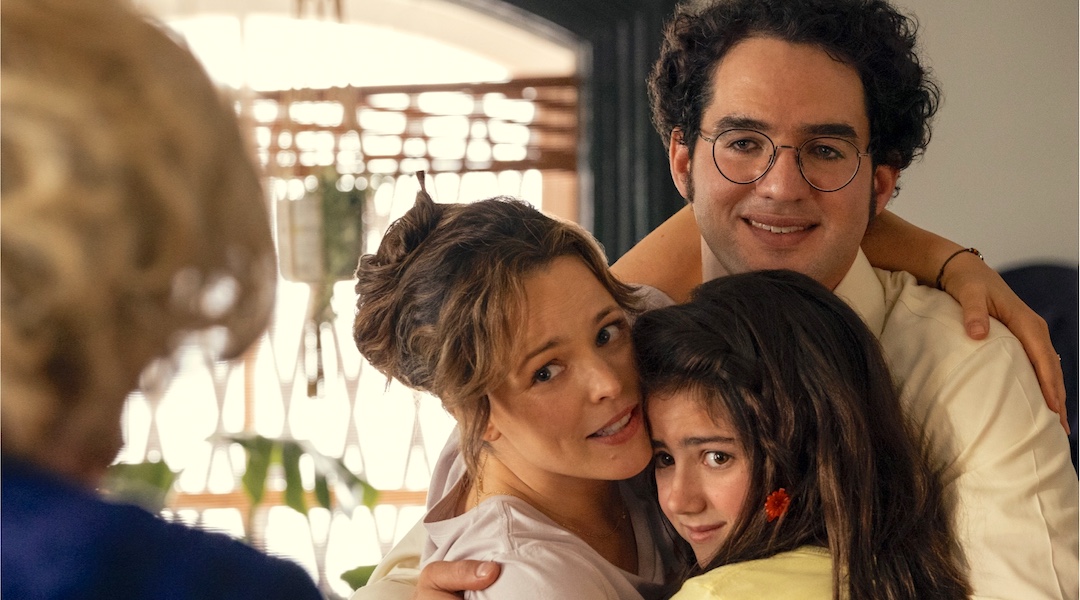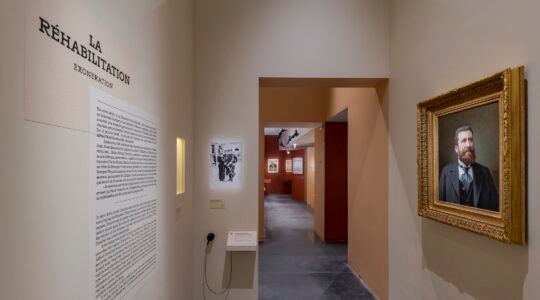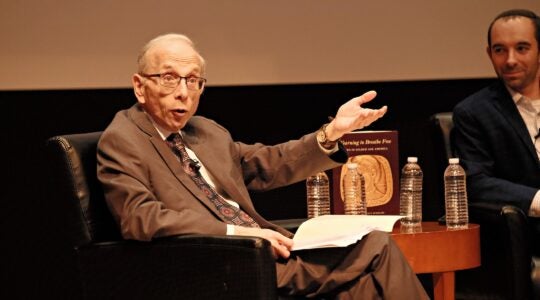(JTA) — After watching “Are You There, God? It’s Me, Margaret” with one of my grandchildren, I’m very concerned that the thousands of tweens and teens who watch the movie will accept, as true, its very negative message about religion in general, and interfaith marriage in particular.
The movie is based on a book Judy Blume wrote in 1970, a long time ago. That date does flash on the screen when the movie begins, but it’s easy to forget that you’re watching a story based on things as they were over 50 years ago. The movie’s treatment of puberty, pre-teens kissing and mean girls ages well, although I’m no expert on those issues.
But the ways people experience interfaith marriage and religion today are very different.
The most dramatic part of the story is how Margaret’s Christian mother’s parents cut off contact with her when she married Margaret’s Jewish father — and had no contact with their granddaughter for 12 years.
It’s true that even today some non-Orthodox Jews react very harshly if their children fall in love with someone who is not Jewish. That definitely happened more in the 1970s, when there was not yet much interfaith marriage and the taboo against it was still high. My mother’s father literally sat shiva when a first cousin of mine intermarried in the 1960s.
When I married in 1974, my parents were unhappy that my wife was Christian, and while my wife’s parents never said anything, we learned much later that her father was unhappy that I was Jewish.
But they all put love of their family over those preferences, and they all had very loving relationships with our Jewish children.
Both of our children married partners from different faith backgrounds; I am pretty sure that our Christian machatunim (their spouses’ parents) were as delighted with these marriage choices as we were. Our grandchildren are adored by their two Jewish grandparents and two from different faith backgrounds.
I am afraid that the tweens and teens who watch the movie will not understand that its depiction of parents cutting off contact with their children for marrying someone from a different religion has fading relevance in our world today. As far back as 2000, an American Jewish Committee study found that 56% of American Jews did not oppose interfaith marriage and 80% said it was inevitable in an open society. The most recent Pew study of Jewish Americans found that only 22% of Jews said it was very important that their grandchildren marry Jews.
Meanwhile, Pew found that the number of Americans who have a spouse from a different religious group than their own rose from 19% who wed before 1960 to 39% who wed after 2010 — suggesting taboos have fallen among non-Jews as well.
Viewers of the movie won’t understand that people realize now that giving up connection with children and grandchildren deprives one of so much love, it’s just not worth doing.
The second largely out-of-date part of the story is how Margaret’s parents do not practice any religion — they don’t celebrate Christmas or Hanukkah — and tell Margaret she can pick a religion when she’s an adult. Margaret is clearly curious about religious matters — after all, as the title says, she’s always trying to talk to God.
I’m afraid that kids who watch the movie will not understand that today it is rare for Jewish-Christian couples to decide not to have any religion in their lives. The recent Pew study found that 57% of interfaith couples raise their children as Jewish only; that may include celebrating Christian holidays in a not-religious way, or it may not. The study found that 12% of parents raise their children partly Jewish and partly another religion. Some 30% do not raise their children Jewish at all; they may be raised Christian only, maybe with or without Jewish holidays, or with no religion at all.
There’s no suggestion in the movie that for Jewish-Christian interfaith families like Margaret’s, engaging in a religious community — whether Jewish, Christian, or both — can be a profound source of meaning and connection. Instead, the message is that religion is boring and confusing. In the movie’s synagogue scene, everything is unfamiliar to Margaret because she had no prior experience, and incomprehensible because all in Hebrew. I’m afraid that kids who watch the movie will have no idea that Jewish worship services can be lively and meaningful — even with lots of Hebrew.
The dramatic climax of the movie is a scene in which the Christian grandparents show up to say that Margaret should be baptized. They’ve had no contact with her for 12 years. The Jewish grandmother’s declaration that Margaret is Jewish because she went to services once is equally ridiculous. In over twenty-five years working with and studying interfaith families, I almost never encountered this kind of conflict. I’m afraid viewers won’t understand that this kind of fighting over a granddaughter’s religious identity — instead of respecting her parents’ decisions about religion — thankfully is very rare.
Fiction seems to need conflict. There is a paucity of positive messaging about interfaith families being happily engaged in fulfilling religious communities with supportive grandparents. Perhaps those stories wouldn’t sell — but they are the reality for so many interfaith families. It is very unfortunate that this movie will leave tween and teen viewers — especially those from interfaith families — questioning that reality.
JTA has documented Jewish history in real-time for over a century. Keep our journalism strong by joining us in supporting independent, award-winning reporting.







